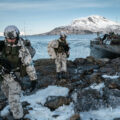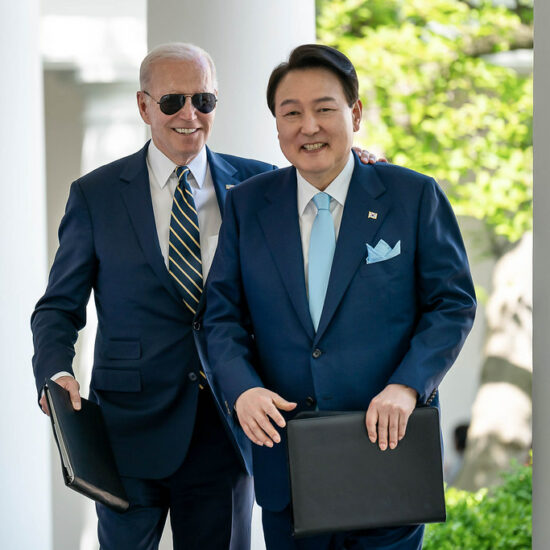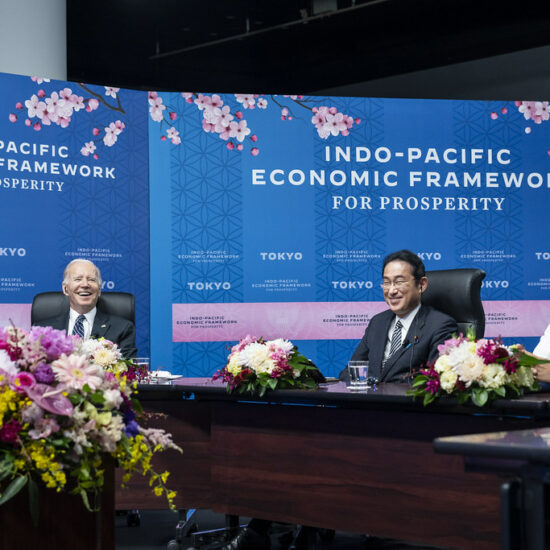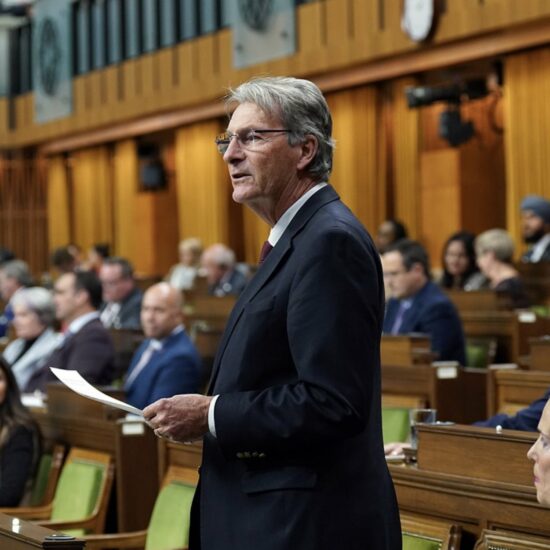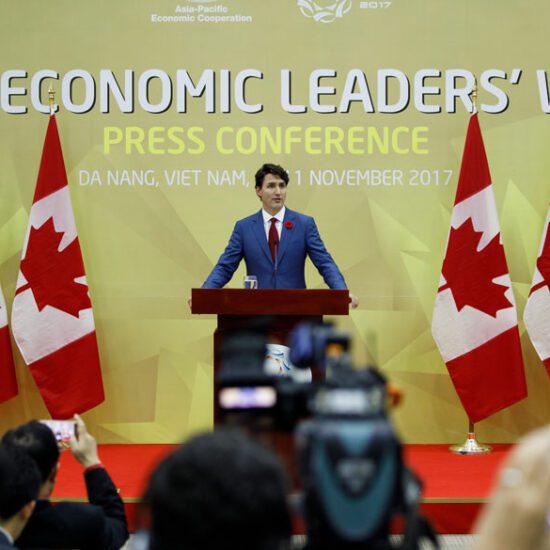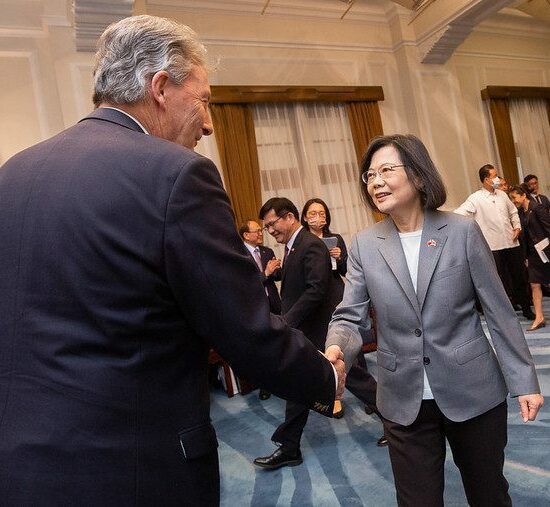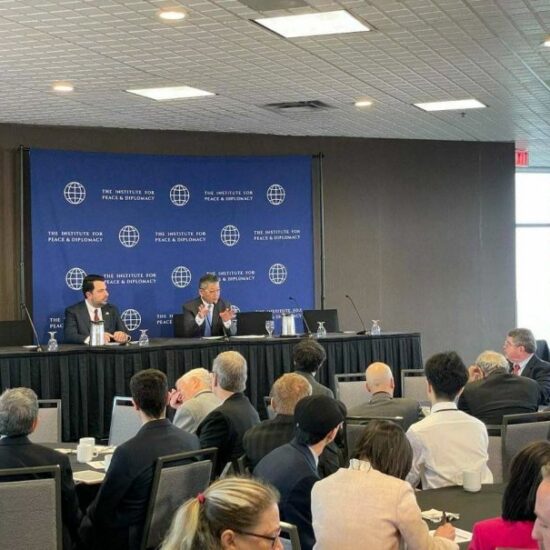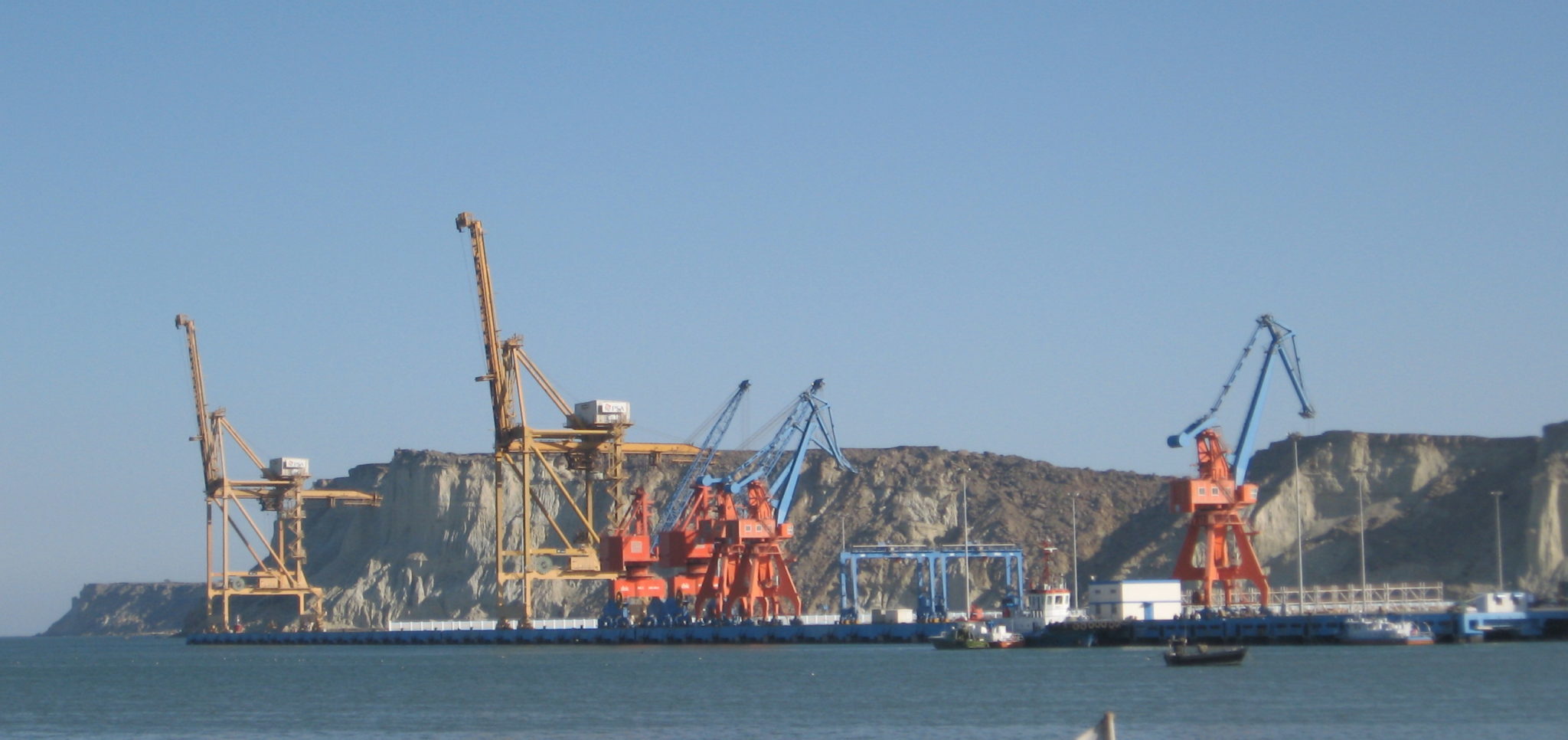
Image Credit: Moign Khawaja
Key Takeaways
- The Belt and Road Initiative (BRI) is a Chinese state-directed investment and infrastructure development project primarily targeting developing nations in and around the Eurasian supercontinent across two axes, an inland Eurasian ‘belt’ and a maritime ‘road’ connecting the Indo-Pacific to Africa.
- The BRI is not destined to be detrimental to the geopolitical position of North Atlantic powers (viz., U.S., U.K., and Canada) and, by better connecting remote disconnected regions to the global economy, may indirectly raise North Atlantic’s diplomatic leverage in these regions over the long term.
- There is no guarantee the BRI will succeed, and its pursuit could simply amount to China wasting a large amount of money in fruitless pursuits. Nevertheless, if the project does succeed, it could help increase trade opportunities for the target countries with all international markets, not just China’s.
- BRI projects could aid efforts to combat extremism in certain unstable regions of the world by bringing the benefits of globalization and increasing development and employment opportunities. This includes bolstering local counter-terrorism options across these regions so as to preclude the need for NATO like in Afghanistan.
- Rather than decreasing the autonomy of target countries vis-à-vis Beijing, as commonly assumed, BRI projects could provide these states and their populations with resources (such as modern internet and telecommunications infrastructure) to increase their autonomy, facilitating the creation of various regional blocs made up of several small powers.
The Strategic Goals of the BRI and Its Reception in the West
The BRI is the Chinese government’s ambitious and international infrastructure development project whose goal is to greatly expand trade and logistical capacity across numerous partner nations. Many of the targeted nations are peripheral to major global trade networks and are often overlooked when it comes to foreign direct investment (FDI). As a continental power, Beijing’s plan is to not only increase the viability of these nations as trade partners, but also to compete with the maritime powers for influence.
The BRI’s investment and development plan aims to expand trade and logistical capacity with the potential to expand the project to over 130 nations. It specifically targets an inland-Eurasia-focused grouping of ‘one belt economies’ (initially) through developing miles of ambitious highways and railroads that will eventually connect Mongolia, Russia, the former Soviet Republics in Central Asia, the Caucasus, Turkey, and most recently Iran as well as a variety of Central, Eastern, and Southern European states. Additionally, the BRI seeks to reestablish the historical Indian Ocean trade networks of maritime commerce by linking via strategic ports and hubs the so-called ‘one road economies’ that roughly correspond to the developing coastal nations in Southeast Asia, the Indian Ocean, and East and West Africa,
Railroads and highways are the initial focus of the first axis, and ports the second. The goals are cast as policy coordination efforts among participant governments, communication facilitation on macro-issues related to commerce between the signatories, facilities’ connectivity via standardized infrastructure, integration of finance mechanisms among nations, and a general reduction of trade barriers and excess customs procedures whenever possible.
The total cost of this undertaking to China is estimated to reach between $4 and $8 trillion dollars by the projected completion of the project in 2049, with $900 billion in annual investment required to meet targets. These numbers would stress the Chinese economy, and so far the project has fallen short of proposed funding levels. By 2017, China had invested $340bn. If that rate continued, the target goal of $1trn by 2025 could be realized. If increased, state spending on the project could reach $2trn by 2030.
North Atlantic strategists fear the potential of this project to redirect trade and influence away from their ports and traditional avenues, believing that as China gains control over smaller nations, it will establish itself as the world’s dominant trade nexus. Multiple think tanks and commentators have raised concerns about how the Chinese might assert economic control over much of the planet and exclude the other countries from entire regions.
These concerns distract from the immense opportunity to the North Atlantic world that is unfolding in real time. The BRI poses no real threat to the supposedly excluded countries that have the foresight to take advantage of new opportunities. The possibility now exists to not only increase trade with regions beyond the scope of normal focus for countries like the U.S., Canada, and the U.K., but also to affirm the sovereignty of smaller countries by welcoming the chance for them to become more competitive on the world stage. Already, the arrival of the BRI has prompted some countries to increase their own alternative investments in regional infrastructure to compete with Beijing.
Potential Benefits for BRI Partner Nations
The BRI may well reduce trade costs by streamlining infrastructure standards and customs regimes among its partner countries while reducing trade barriers. Given that the Chinese made massive economic gains under US-backed trade policies from the end of the Cold War onwards, the BRI could allow its partner nations to do the same by piggybacking on Beijing’s programs. Rendering pre-existing trends more efficient at generating commerce could open opportunities for all actors doing business in the region, not just the initial investor.
One particular of concern often raised by North Atlantic commentators is the potential for China’s highly monitored and tightly regulated internet to expand into these countries as part of Beijing’s Digital Silk Road initiative. It is important to note, however, that such digital and cyber partnerships are often motivated less by ideology than they are by circumstantial and pragmatic considerations that drive decision-making for many developing countries. After all, many of the countries in BRI partnerships are already repressive toward their citizens without a well-developed cyber infrastructure. In the long run and once an advanced internet infrastructure network is established, it is more likely that, rather than acquiescing to Beijing, Digital Silk Road participating nations will use their enhanced security capacities to strengthen their own power in their own country at China’s expense. If a government decides to pursue a more independent path towards Beijing, an advanced internet capability, such as fifth-generation technology (5G), could provide such a state with more options allowing it to better diversify its security relationships.
Moreover, the growth of 5G networks in developing countries vastly improves the connectivity of their citizens to the greater world, better integrating both that market and its people with the global economy and opening the local economy to partake in the benefits of international trade and modern technology. Thus, no matter which state, if any, wields digital power in various localities of the “Digital Silk Road”, the continual development of this infrastructure will nevertheless increase business opportunities for all who wish to expand commercial ties with the host country, no matter which country they originate from.
Development can also help make states more governable and responsible to their citizens. The absence of economic opportunity enhances the appeal of extremist groups in the poorer regions of the world. Expanding and improving infrastructure in regions where extremist non-state actors operate is no panacea, but it can help limit their appeal. In Central Asia, for example, Kazakhstan’s successful post-Soviet development has enhanced its internal stability, while its neighbor Uzbekistan – which has struggled to develop – hosts Central Asia’s largest jihadist recruitment drive.
The potential benefits of increased development throughout Eurasia also increases the capacity for local states to combat terrorism on their own terms, which decreases the odds of further afield countries having to become trapped in military operations in regions far removed from their core national interests. What is more, BRI projects will inevitably produce more regional integration with neighboring countries having a much higher stakes in stability and preserving the integrity of the region’s infrastructure networks. In the case of America’s longest running war in Afghanistan for instance, powerful neighboring countries (from China and Russia to Iran and Pakistan) will have an even greater interest in preventing state failure in that country, which could escalate into transnational insecurity and disorder and thus do lasting damage to these nations’ investments toward infrastructure and trade.
Just as foreign development assistance helped countries such as Egypt, Yugoslavia, and some non-aligned countries bolster their independence during the Cold War, the BRI could also solidify the economic and political sovereignty of beneficiary states. Increased levels of development fueled through infrastructure and trade can enable smaller countries to attract investment from multiple competing powers, in turn increasing their ability to shop around for better deals and lessen their dependence on a single source. Already, Japan has begun to compete with China on projects in countries signed up to the BRI program by offering alternative and competitive investments in infrastructure.
Countries recovering from conflict, such as Pakistan and Tajikistan, tend to be dependent on larger patrons. Pakistan’s internal fragility, for instance, causes it to lean heavily on Chinese support, especially for defense. But should it become a more important conduit of international trade from Central Asia through its newly upgraded and integrated ports on the Indian Ocean, it would be better able to diversify its sources of foreign assistance. Tajikistan is the least developed nation in Central Asia, and since the Tajik Civil War, Russia has maintained a large and influential military presence in the country. Tajikistan is also incredibly rich in hydropower, of which it is a net exporter. The BRI-driven expansion in pan-regional infrastructure could increase Tajikistan’s trading options and decrease its dependence on Moscow. Other countries with significant interests in the Indian Ocean could also benefit. As part of the BRI, China has taken out a 99-year lease on a new port in Hambantota, Sri Lanka, and undertaken its development. While this venture might seem, at first, to be illustrative of Chinese economic predation—whereby Sri Lanka becomes more dependent on Chinese investment and subservient to its interests—in practice, the deal has alerted Japan and India to the need to invest in Sri Lanka to prevent China from gaining too much strategic traction there thus encouraging competition.
In any case, evidence that the BRI is winning China massive goodwill in beneficiary countries is inconclusive. China often stipulates that its own companies and laborer’s must get many of the jobs created by BRI-related projects, which generates some resentment. So far, the BRI’s largest effect in Central Asia appears to be to encourage public discussion on the tolerable amount of Chinese influence. China can help build infrastructure and stimulate growth and prosperity, but it is not necessarily buying long-term leverage that would exclude other powers from competing with Beijing to exert their own diplomatic weight.
Wider Geopolitical Implications of the BRI
NATO countries do not have much to offer many BRI-partnered nations. Many of these countries are located far away or on the fringes of the Atlantic world and their distance diminishes their immediate strategic importance for North Atlantic powers while making the cost/benefit burden of direct involvement less attractive. Although the potential benefits to Beijing are real, the BRI carries enormous financial risk in the form of publicly guaranteed debt. This will be the major source of funding for many countries on the BRI priority list. According to the World Bank, almost two-thirds of the countries affected by the BRI have elevated debt vulnerabilities, and over one-third are in danger of or in debt distress. Many projects will not work out or pay off for China, likely undermining smaller nations’ relationships with Beijing. The likelihood of such uneven results suggests that China may struggle to transform its BRI investments into hegemonic reach, or will have to peddle influence in a way that involves compromising with local actors to a far greater degree than was originally foreseen.
The BRI may also lead to private investment in places previously regarded as economic backwaters. The massive expansion of infrastructure during the Cold War in places like Singapore, Malaysia, and the Persian Gulf states greatly increased the international prominence of those countries. Owing money to China also gives smaller powers some situational leverage with Beijing as they navigate a newly competitive investment market domestically. At the same time, China’s political compulsion to keep projects profitable significantly limits its financial options, as does its incentive to buoy the ability of the host country to raise investment elsewhere to ease the financial burden on Beijing.
While no reprise of the Sino-Soviet split of the 1960s is likely now, the BRI could in time increase rather than decrease Sino-Russian rivalry. Russia has strong defense ties with India, which is skeptical about the BRI but a potential beneficiary of its trade promotion. Dating back to Indian independence, the Soviet Union and now Russia has been a reliable arms supplier to the Indian state. Since the 1962 Sino-Indian Border Conflict through today’s Himalayan border disputes, Beijing and New Delhi have had a troubled and often turbulent relationship. The border clashes of 2020 show this has not diminished as a factor in the bilateral relations between the two countries. Customary cooperation between Pakistan and China is a constant concern for India. For geopolitical reasons, Russia remains compelled to balance between India and China, and the expansion of the BRI will not change this dynamic. In this light, it seems premature to anticipate that the BRI will lock in a permanent and robust Sino-Russian alliance.
Alternatively, open interference by outside actors seeking to undermine the BRI could be perceived as hostile and might alienate smaller nations and drive them closer to China. Led by the United States, North Atlantic powers have little influence or interest in many of the countries signing on to become partners with Beijing. Development of these regions, especially given the dearth of realistic or viable alternatives to the BRI, could even deliver benefits to the North Atlantic such as easing the burdens of global counter-terrorism operations or expanding the long-term sovereignty of smaller nations along the Chinese periphery.
Adopting a policy of restraint toward BRI by the North Atlantic governments in Washington, Ottawa, and London should not discourage Western firms from pursuing attractive investment opportunities in BRI countries. In fact, this could be the win-win scenario: BRI projects provide such non-local companies with better access and infrastructure in faraway lands, and, owing to the private nature of such transactions and the greater distance of the West from BRI nations compared to China, smaller nations would likely welcome private investments from the North Atlantic as a means to balance the reach of China and its state-directed enterprises.
Conclusion
The BRI is an example of a larger phenomenon: as states get richer, they tend to invest more heavily abroad in ways that advance their interests. But as the junior partners in such arrangements receive more funds, they are better able to act autonomously when it comes to competitive diplomacy. This means that policymakers in places like Washington, Ottawa, and London would be wise to expand trade relationships and be more sparing in deploying sanctions that could drive away potential partners. Confident and secure nations should not enter bidding wars for influence in regions with little strategic return on investment.
The BRI could bring a variety of outcomes to the smaller Eurasian states, none of which substantially endangers US security. Greater levels of development may increase trade to the region and reduce violent extremism. They probably will not seriously compromise the sovereignty of the smaller participant states and may even help some strengthen their regional negotiating positions by playing China off against other potential patrons.
The general principle stands that China’s development of international trade links and relationships is not an automatic zero-sum loss for other nations that wish to capitalize on international trade. Chinese investment does not preclude investment by private companies, and the more patrons a smaller country has, the less likely it is to be bought out by a single foreign nation. International competition from multiple vectors increases the odds of a smaller developing nation further empowering its sovereignty, and thus overall security, and leveraging its position in a multi-polar system.
The geographical distance of North Atlantic states from inland Eurasian states means that these countries are likely to view this bloc as a less threatening counter-balancing partner than China. North Atlantic policymakers should not squander this advantage by taking a confrontational or obstructionist approach to the international infrastructure projects of other powers. An overwrought reaction to the BRI by the U.S. and her allies would only transform it from a non-threatening opportunity for greater regional integration and collective responsibility into yet another trigger for potential escalation and conflict—this time among great powers.
Note: The author previously published a similar argument with a specifically U.S. grand strategy focus in the July 2020 issue of Survival: Global Politics and Strategy.
Dr. Christopher Mott is a Research Fellow at the Institute for Peace & Diplomacy.
